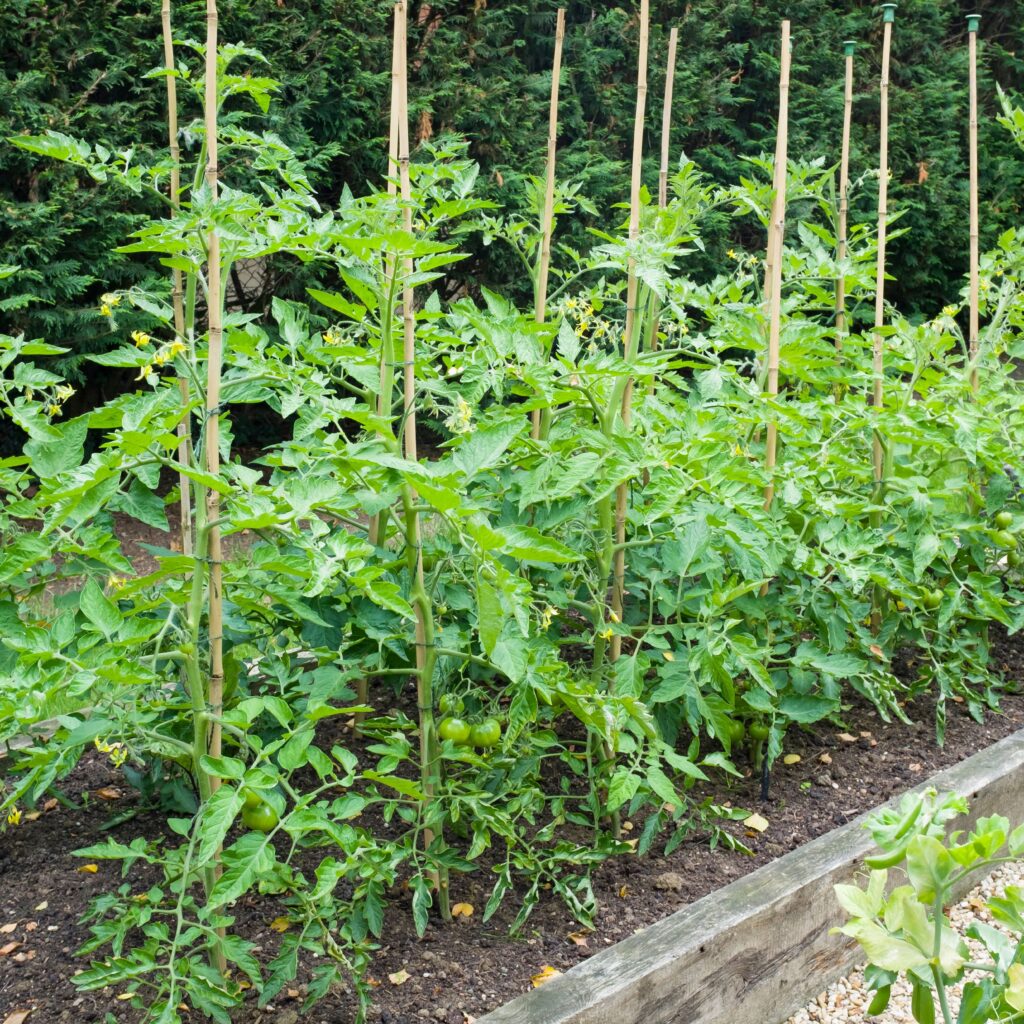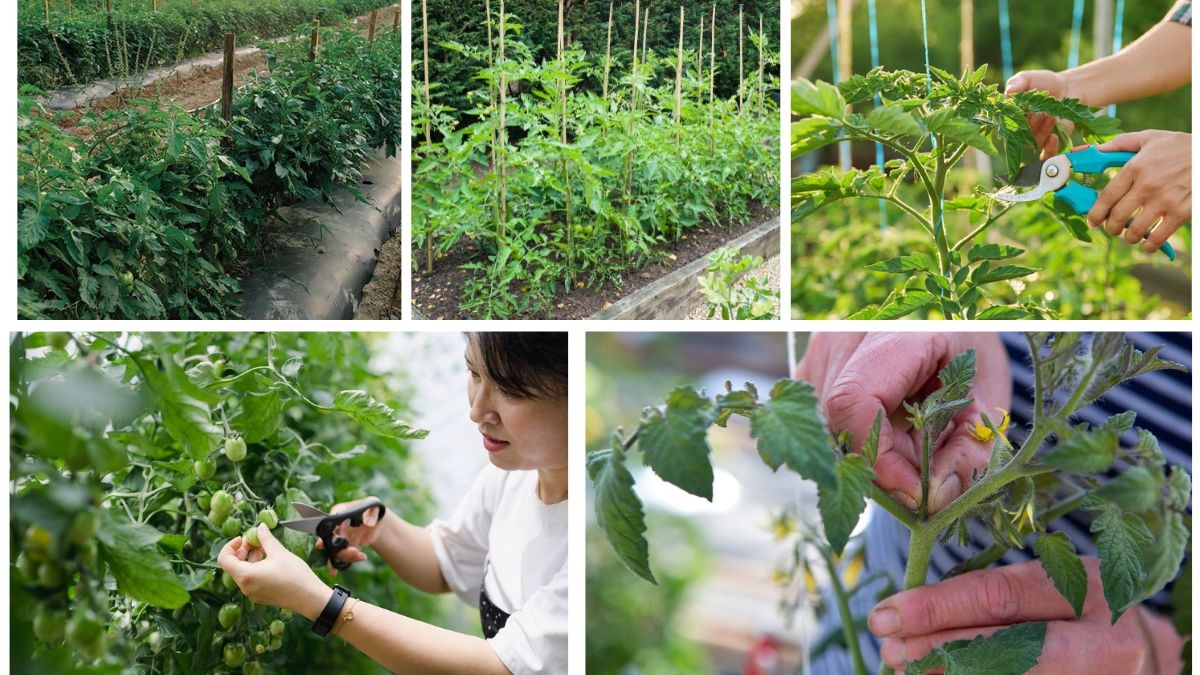Tomatoes are among the most popular plants grown by home gardeners around the world. Whether you prefer slicing tomatoes for sandwiches, making sauces, or enjoying cherry tomatoes as snacks, there’s nothing quite like the satisfaction of harvesting juicy, flavorful fruit from your own garden. However, growing healthy, productive tomato plants requires more than just planting and watering. One of the most effective techniques to maximize yields and improve fruit quality is pruning.
Pruning tomato plants may seem intimidating to beginners, but once you understand why and how to do it, you’ll see just how important it is. Proper pruning helps channel the plant’s energy toward producing larger, better-quality fruit rather than excessive foliage. This guide will walk you through everything you need to know about pruning tomato plants effectively—covering why it matters, when to do it, and the best step-by-step practices.
Why Prune Tomato Plants?

Tomato plants are vigorous growers that can quickly become a tangled mess of leaves, stems, and small shoots. While lush foliage looks appealing, too much of it diverts energy away from fruit production. Pruning provides several important benefits:
- Bigger, Better Fruit Production
By removing unnecessary growth, pruning ensures the plant directs nutrients and energy toward developing fruits rather than excess leaves. This results in larger, tastier tomatoes. - Improved Air Circulation
Overcrowded plants can trap moisture, creating the perfect environment for fungal diseases like blight. Pruning improves airflow, keeping plants healthier. - More Sunlight for Fruit
Exposed fruit ripens more evenly when it receives adequate sunlight, leading to vibrant color and enhanced flavor. - Easier Maintenance and Harvesting
Pruned plants are tidier, making it easier to water, check for pests, and pick ripe tomatoes. - Disease Prevention
Removing lower leaves that touch the soil reduces the risk of soil-borne diseases spreading onto the plant.
Determinate vs. Indeterminate Tomatoes

Before pruning, it’s essential to understand the type of tomato plant you’re growing:
- Determinate Tomatoes (Bush Varieties):
These plants grow to a certain size and produce most of their fruit within a short period. They require minimal pruning—only the removal of damaged or diseased leaves. - Indeterminate Tomatoes (Vining Varieties):
These plants keep growing and producing fruit throughout the season. Pruning is essential for them because they can become overly bushy and unproductive if left alone.
If you’re growing indeterminate varieties like Beefsteak, Brandywine, or many cherry tomatoes, pruning will have the most significant impact.
When Should You Prune Tomato Plants?
Timing is key for successful pruning. Here’s what you need to know:
- Early Growth Stage: Begin pruning when the plant is about 12–18 inches tall. At this point, you can start removing lower leaves and unnecessary suckers.
- Throughout the Growing Season: Continue pruning weekly or biweekly as new suckers and foliage appear.
- Late Season: About a month before your area’s first frost, consider topping the plant (cutting off the growing tips) to stop new growth and encourage the remaining fruit to ripen.
Tools You’ll Need

Pruning doesn’t require complicated tools, but cleanliness and sharpness matter:
- Pruning shears or scissors: For thicker stems.
- Garden gloves: To protect your hands from sap and dirt.
- Clean cloth or disinfectant: Wipe tools between cuts to avoid spreading disease.
Step-by-Step Guide to Pruning Tomato Plants
1. Identify the Suckers
Suckers are small shoots that grow between the main stem and a leaf branch (in the plant’s “armpits”). While they can eventually produce flowers and fruit, they also draw energy away from the main plant.
- For indeterminate tomatoes, regularly remove suckers to keep the plant manageable.
- For determinate tomatoes, leave suckers intact since they contribute to the plant’s main fruit production.
2. Remove the Lower Leaves
As your tomato plant grows, remove the leaves closest to the soil. These lower leaves are most likely to pick up diseases from splashing water and also block airflow.
- Start removing leaves when the plant is about 12–18 inches tall.
- Gradually remove the bottom third of foliage throughout the season.
3. Choose a Single or Double Stem
Most gardeners train indeterminate tomatoes to grow with one or two main stems.
- Single-stem method: Remove all suckers, leaving only the main stem. This method produces fewer but larger fruits.
- Double-stem method: Leave one strong sucker below the first flower cluster to grow alongside the main stem. This method balances yield and fruit size.
4. Pinch or Cut Suckers Early
The easiest way to prune suckers is to pinch them off with your fingers when they are small (2–4 inches long). If you wait too long, they become thicker and require pruning shears.
5. Top the Plant
Toward the end of the season, you can “top” your tomato plants. This involves cutting off the growing tips at the top of the main stem about 4–6 weeks before frost. Doing so forces the plant to stop producing new growth and focus on ripening existing fruit.
6. Remove Yellow or Diseased Leaves
As the season progresses, you may notice yellow, spotted, or wilted leaves. Always remove these promptly to prevent disease from spreading.
Common Mistakes to Avoid When Pruning

- Over-Pruning
Removing too much foliage can stress the plant and expose fruits to sunscald. Aim for a balance: prune enough for airflow but leave enough leaves for photosynthesis. - Pruning at the Wrong Time
Avoid heavy pruning during extremely hot or dry conditions, as it may shock the plant. - Leaving Big Open Wounds
Always cut cleanly and close to the stem. Jagged cuts make the plant vulnerable to infections. - Neglecting Determinate Tomatoes
Pruning determinate varieties too much can drastically reduce yield since they rely on their foliage and suckers for fruiting.
Additional Tips for Healthy Tomato Plants

- Stake or Cage Your Plants: Pruning works best when paired with proper support, such as stakes, cages, or trellises. This keeps pruned plants upright and tidy.
- Water Deeply and Consistently: Irregular watering leads to problems like blossom-end rot. Aim for consistent soil moisture.
- Fertilize Appropriately: Too much nitrogen encourages leafy growth rather than fruit. Use a balanced fertilizer or one slightly higher in phosphorus and potassium.
- Mulch Around the Base: Mulching keeps soil moisture consistent and prevents soil-borne diseases from splashing onto leaves.
The Rewards of Pruning: Bigger, Better Harvests
Pruning tomato plants may seem like an extra chore, but the rewards are well worth it. By removing unnecessary growth, you give your tomato plants the structure, airflow, and energy they need to thrive. The result? Plump, juicy, flavorful fruits that ripen beautifully and are easy to harvest.
Whether you’re growing a handful of tomato plants in containers or managing a larger garden, pruning is the secret technique that separates a decent harvest from an outstanding one. With a little practice and consistency, you’ll soon master the art of pruning and enjoy bigger, better tomatoes every season.






Leave A Comment